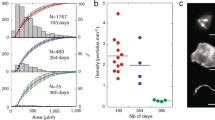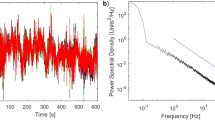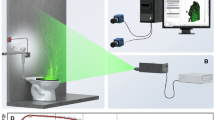Abstract
WHILE I was a passenger from New Zealand to the United Kingdom in September 1947, I was able to expose microscope slides on a stick held out from commercial flying boats, and I trapped as many as 143 pollen grains and 273 fungal spores on 7·5 sq. cm. of adhesive surface exposed for five minutes at 140 knots (about 160 m.p.h.). Proctor1 outlines a number of complicated constructions for exposure of slides from aeroplanes; but the simple method I have used makes it possible for biologists travelling as ordinary passengers on commercial aircraft to contribute to our knowledge of aerobiology. The method is due to a suggestion by Mr. E. A. Madden of the Department of Scientific and Industrial Research, New Zealand, to run a leading wire before the slides to break up the pressure cone, and to streamline the stick behind in order to prevent turbulence from increasing its apparent width. At the lower speed of their aircraft, this may not have been necessary for the single slides of Polunin et al.2; and of Stakman et al.3; but the larger surface of Stakman‘s multi-slide trap may have required some such provision, and hence its poorer performance. My exposures were made through the astro-hatch of the Empire-class flying boat Aotearoa, over the Tasman Sea, and through the window of the steward‘s pantry on the Hythe flying boat, Hobart, thereafter.
This is a preview of subscription content, access via your institution
Access options
Subscribe to this journal
Receive 51 print issues and online access
$199.00 per year
only $3.90 per issue
Buy this article
- Purchase on Springer Link
- Instant access to full article PDF
Prices may be subject to local taxes which are calculated during checkout
Similar content being viewed by others
References
Proctor, B. E., Phytopath., 31, 201 (1941) (Section on "Microorganisms in the Upper Air", in a composite article).
Polunin, N., et al., Nature, 160, 876 (1947).
Stakman, E. C., et al., J. Agric. Res., 24, 599 (1923).
Erdtman, G., "An Introduction to Pollen Analysis", 180 (Chronica Botanica Co., Waltham, Mass., 1943).
Ewart, A. J., "Flora of Victoria", (Univ. Press, Melbourne, 1930).
Meier,F. C., Phytopath., 26, 102 (1936).
Author information
Authors and Affiliations
Rights and permissions
About this article
Cite this article
NEWMAN, I. Aerobiology on Commercial Air Routes. Nature 161, 275–276 (1948). https://doi.org/10.1038/161275b0
Issue Date:
DOI: https://doi.org/10.1038/161275b0
This article is cited by
-
Aerial dispersal of biological material from Australia to New Zealand
International Journal of Biometeorology (1978)
Comments
By submitting a comment you agree to abide by our Terms and Community Guidelines. If you find something abusive or that does not comply with our terms or guidelines please flag it as inappropriate.



